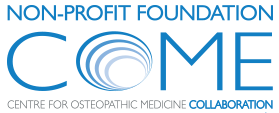Task Force on the Low Back Pain Clinical Practice Guidelines. American Osteopathic Association Guidelines for Osteopathic Manipulative Treatment (OMT) for Patients With Low Back Pain. J Am Osteopath Assoc. 2016;116(8):536-549. doi:10.7556/jaoa.2016.107
This webinar will be presented by Dr Christelle Nguyen, MD, PhD and Mr Rafael Zegarra-Parodi, DO (UK), co-authors of the paper published on March 15th, 2021 in the JAMA Internal Medicine, and moderated by Pr Paul Vaucher, DO (CH), PhD.
During this webinar, the results of this randomized controlled trial will be presented with commentaries and discussion from both medical and osteopathic perspectives.
Here’s what you can expect to learn from the session:
- The need for methodological innovations to investigate osteopathic care.
- The importance of modeling all potential active components of osteopathic care.
- The value of osteopathic care beyond body-centered models.
- A chance to pose any remaining questions to our speakers.
The webinar will be in English language and the recording of the session will be available on COME Collaboration’s website after the live event.








